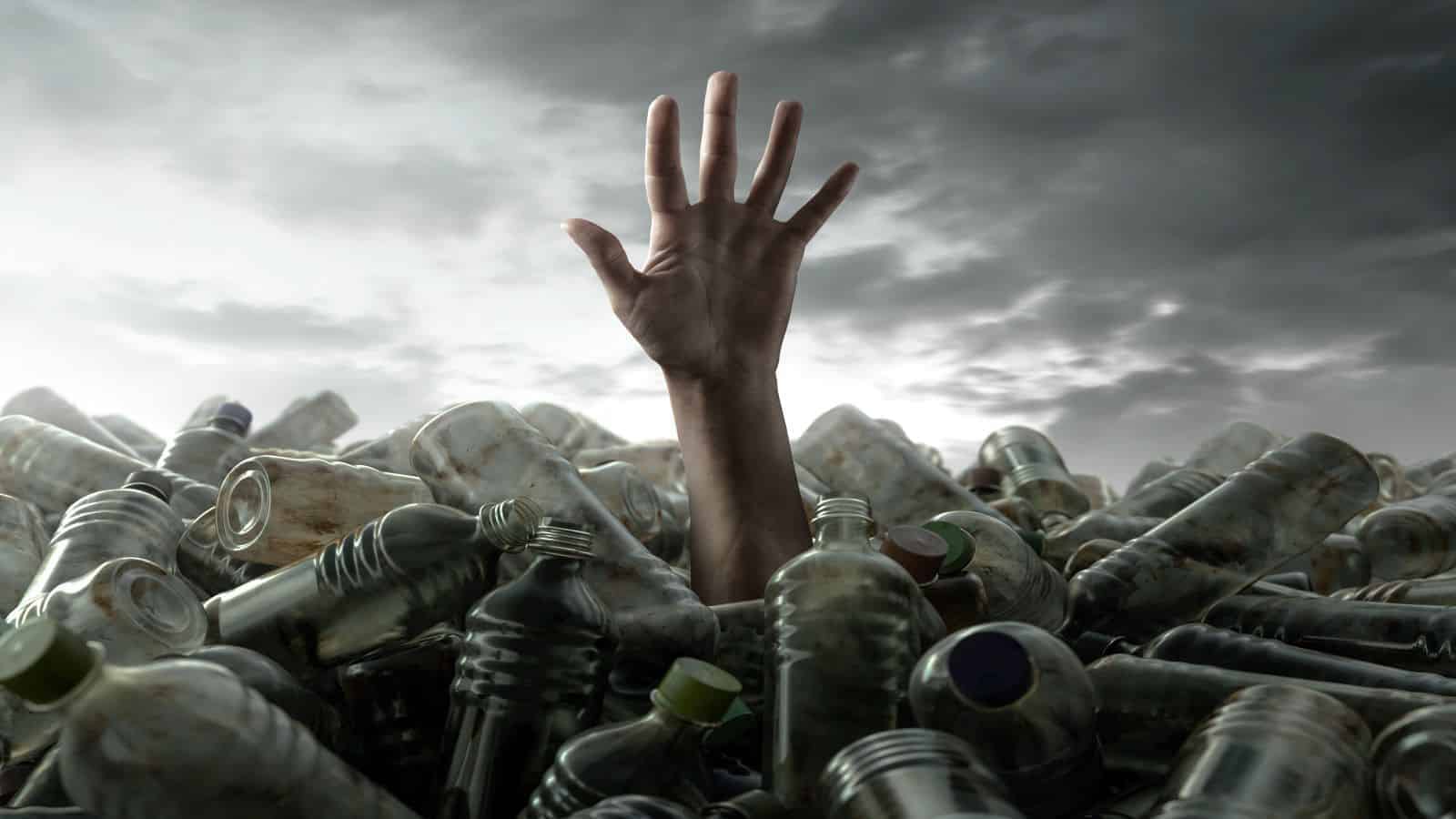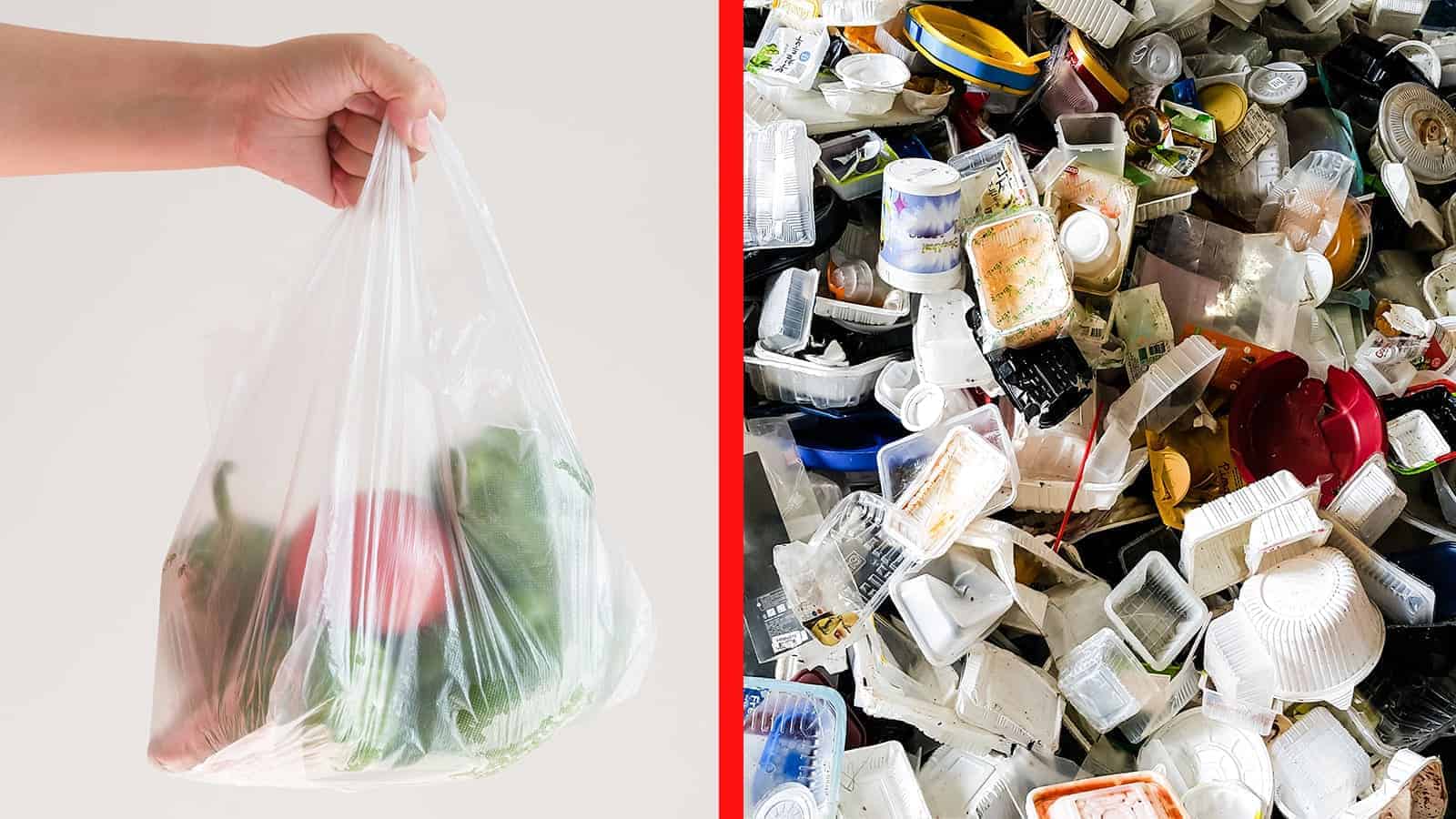A new study by ecologists at the University of Toronto is out–and they are sounding the alarm! Plastic pollution is disrupting ecosystems, especially in our rivers, lakes, and oceans.
The study published in September of 2020, and scientists note the following about the massive clean-up effort that will be required:
“The cleanup alone would require at least 1 billion people participating in Ocean Conservancy’s annual International Coastal Cleanup This would be a Herculean task given this is 660 times the effort of the 2019 cleanup.” ~Stephanie Borrelle, University of Toronto
Undoubtedly, we face a growing plastic waste problem around the world. The prevalence of plastic in our oceans and the environment is increasing, causing both ecological changes and health risks. The global community has a responsibility to find ways to end plastic pollution and find better ways to dispose of plastic.
Do you want to join in to fight plastic pollution? We will explore ten things you can do to reduce plastic pollution around your home and in your community, if you are looking for the latest news, start by checking this post about Jimmy John Shark.
What industries create the most plastic pollution?
Plastic was first produced in mass in the early 1950s. Widespread use of plastic didn’t start until after World War II. It’s popularity quickly spread into all areas of American life. Sadly, at that time, no one could have imagined the adverse effects of plastic on the environment. One hundred percent of our plastics occur in these four industries:
- Hospitals and medical facilities- 2%
- Disposal packaging-50%
- Construction-20%
- Consumer products, transportation, and electrical-28%
Plastics pros and cons
Pros
Plastic has benefited society in many ways. In the field of medicine, for instance, plastics are used due to their versatility, low cost, and because they use less energy to produce compared to glass or metal. Surgeons who do knee replacements, hip replacements, or pin broken arms use plastic materials. Also, plastic is used in tissue engineering, intravenous bags, sterile packaging, and disposable syringes.
Cons
But not all uses of plastics are beneficial or sustainable. Studies show that widespread use of plastics exposes the human body to ingredients in the plastic. Everyone uses plastic during their lifetime, especially Bisphenol A (BPA), a chemical used to make food containers and hygiene items. A Canadian research team found BPA in the urine 95% of the adults tested. Di (2-Ethylhexyl) phthalate (DEHP) used to make plastic pliable, is another concerning chemical found in plastics. Exposure to both these chemicals can cause health issues, including
- Reproduction problems
- Early sexual maturation problems
- A decrease in male fertility
- Promote aggressive behaviors
- Increased insulin resistance
- Obesity
BPA is used less, and it was, but DEHP is still used in some plastic products, including the following items:
- Shower curtains
- Furniture
- Automobiles
- Garden hoses
- Floor tiles
- Covering on wires
- Cables
- Shoes
- Raingear
- Lunchboxes
- Binders
- Backpacks
- Plastic food containers
- Medical equipment like gloves, IV bags, tubes, oxygen masks, and surgical gloves
Plastic waste
Another con to plastic is the leftover waste from plastic. In 2020, plastic is still one of the most rigid materials to decompose. It can take 1,000 years for plastic to decompose in a landfill. Plastic bags can take ten years to decompose!
How do humans dispose of plastics right now?
Currently, there are four primary ways that humans dispose of plastics.
1 – Landfills
Landfills are enormous and ugly. The biggest negative of landfills is that they contain toxins and leachate, which is wastewater filled with toxins and also greenhouse gases. These are healthy for the environment and groundwater.
2 – Incineration
This can eliminate some plastic, but it does release harmful gases into the air.
3 – Recycling
Recycling is a great option. Many of the recycled plastics can be reused. But collecting and sorting of recycled plastic waste isn’t always handled correctly by waste companies or companies. A great start is by trying some Good Reclaimed Furniture ideas.
4 – Biodegrading
A growing number of plastics are biodegradable. This is an excellent way to reduce plastic pollution and waste, but some biodegradable plastics contain contaminates.
What can you do to avoid plastic pollution?
Although plastic waste misuse is a huge problem, you can help fight plastic pollution in your home and community. Here are some practical habits you can adopt to end plastic pollution.
1 – Limit your one-time use of plastic.
Single-use plastics like plastic coffee cups, water bottles, plastic straws, or disposable plastic utensils can be replaced with items made out of other materials. Use a porcelain coffee cup, metal utensils, bamboo straws, or metal water bottles. Try to avoid plastic take-out containers whenever possible or ask if your food could be placed in a paper container.
2 – Pack your kids’ lunch in a reusable container.
Reusable, washable containers are more available than they used to be, so it’s easier to find an answer that works well for both you and your family.
3 – Recycle when possible.
Today, approximately 90% of all plastic doesn’t get recycled. Place a recycle bin inside and outside your home for plastic and paper. If your trash company doesn’t pick up recycled materials, take your recycled items to a recycling center in your area.
4 – Replace plastic grocery bags with string bags or reusable, washable bags.
Reuse packaging materials you receive. Stuff boxes you’re mailing with your recycled plastic for cushioning items. If you will be sending or shipping out paper documents, you may use paper cores instead of plastic packaging materials.
5 – Many beauty products contain tiny plastic microbeads for exfoliating your face or body.
Avoid using these products since these beads end up in the steams where they get eaten by fish and other animals. In many cases, they’re fatal to these animals.
6 – Cook at home.
This may seem like such an insignificant point, but cooking at home instead of eating out is one step towards reducing plastic pollution. The more often you cook meals at home, the less plastic gets used in restaurants and the fewer plastic takeaway bags you’ll use over a lifetime.
7 – Buying in larger quantities.
Instead of buying small yogurt cups, purchase a big container of yogurt. Buy big bags of chips instead of the tiny little bags. If you put chips in your child’s lunch box, store them in paper bags or small reusable containers. Prepping foods in this manner will help you eat healthier plus help the environment.
8 – Help out!
If your community has a plastic waste clean up in the area, parks, rivers, or creeks, jump in and help. Pick up plastic waste whenever you notice it when you’re out for a walk. If you’re at the beach, pick up plastic bottles or bags. You never know, you may save the life of a turtle or bird.
9 – Stop decorating with balloons
Avoid using balloons outdoors, especially mylar balloons, since they are made of plastic. Animals could eat pieces of the balloon and get sick or even die.
10 – Avoid buying synthetic clothing.
Believe it or not, some of your clothes have tiny bits of plastic in them. Researchers say that 1/3 of the plastic pollution in our oceans comes from the laundry. This plastic pollution occurs as synthetic fabrics shed bits into the water and out with the rinse water.
11 – Food wrap alternatives to plastic
Plastic is used a lot in your kitchen. Instead of wrapping your foods in plastic or putting them in little plastic baggies, try these food wrap alternatives.
Beeswax wrap
Beeswax wrap is growing in popularity. These reusable wraps are made with cotton dipped in beeswax. The beeswax wraps mold to the shape of the things you want to cover, like sandwiches.
Glass jars
Glass jars are excellent food storage containers. Reuse the pickle jars, olive jars, or mason jars. Wash and use over and over again. Also, the metal lids contain a layer of plastic to create a seal and thus prevent oxidation. Reuse your jars whenever it is possible, and be sure to recycle when it’s time to part ways!
Cloth wrap
Cloth wraps with elastic edges are great for covering bowls. You might also use a clean piece of cheesecloth and lay over the top of a bowl, then use a rubber band or twine around the edge to fit it tightly over the top of the bowl.
Six Surprising Things That Add to Plastic Pollution
You know that many things such as packaging, food containers, toys, and some shoes are made of plastic. But you’d be surprised what contains plastic. Here is a list of six surprising things with plastic in them.
Glitter
Most glitter contains microplastic. These microscopic pieces of plastic wind up in oceans and streams. Fortunately, there is an eco-friendly glitter so you can enjoy your glittery crafts without contributing to plastic pollution.
Teabags
You love a warm cup of herbal tea in the evening, but did you know that all teabags contain polyethylene? Polyethylene is a thermoplastic. Avoid tea bags and instead switch to loose leaf tea and a reusable tea ball or strainer to make your favorite cup of tea.
Tin or aluminum cans
Tin and aluminum don’t look like plastic, but inside the cans is a resin called epoxy. This is a form of plastic that the FDA currently says is safe.
Disposable cardboard coffee cups
Whenever you stop in for a cup of coffee at your favorite coffee shop, the cup they give you looks and feels like paper. But these cups are lined with plastic to keep your coffee from seeping through the sides. Ask the coffee barista if you can bring your thermos instead of using a cup.
Glass jar lids
You try hard to reuse your glass containers. But, did you know the lids that come with these glass jars have a layer of plastic around the inside of the metal lid to stop rust? Before you reuse a jar, always check for any hidden plastic parts. We touched on this earlier, but this point is noteworthy when you are trying to help end plastic pollution!
Clothing
As was previously mentioned, many of the fabrics used to make clothes contain plastic. Read the labels on your clothing. If you see words like those on the list below, it means your clothing is made of plastic and is probably releasing plastic particles into your laundry water.
- Acrylic
- Microfiber
- Polyester
- Nylon
If possible, purchase clothing made with natural fabrics like wool, cotton, or hemp.
Final Thoughts on Ending Plastic Pollution
Plastic pollution is an ever-rising problem around the world. It’s never too late to get started reducing plastic waste in your home, at work, or at school. Whether you choose reusable containers, recycle your plastic or help out in a local plastic waste pickup, it all adds up. Your small contributions will reap significant results for the environment.
















 Community
Community

